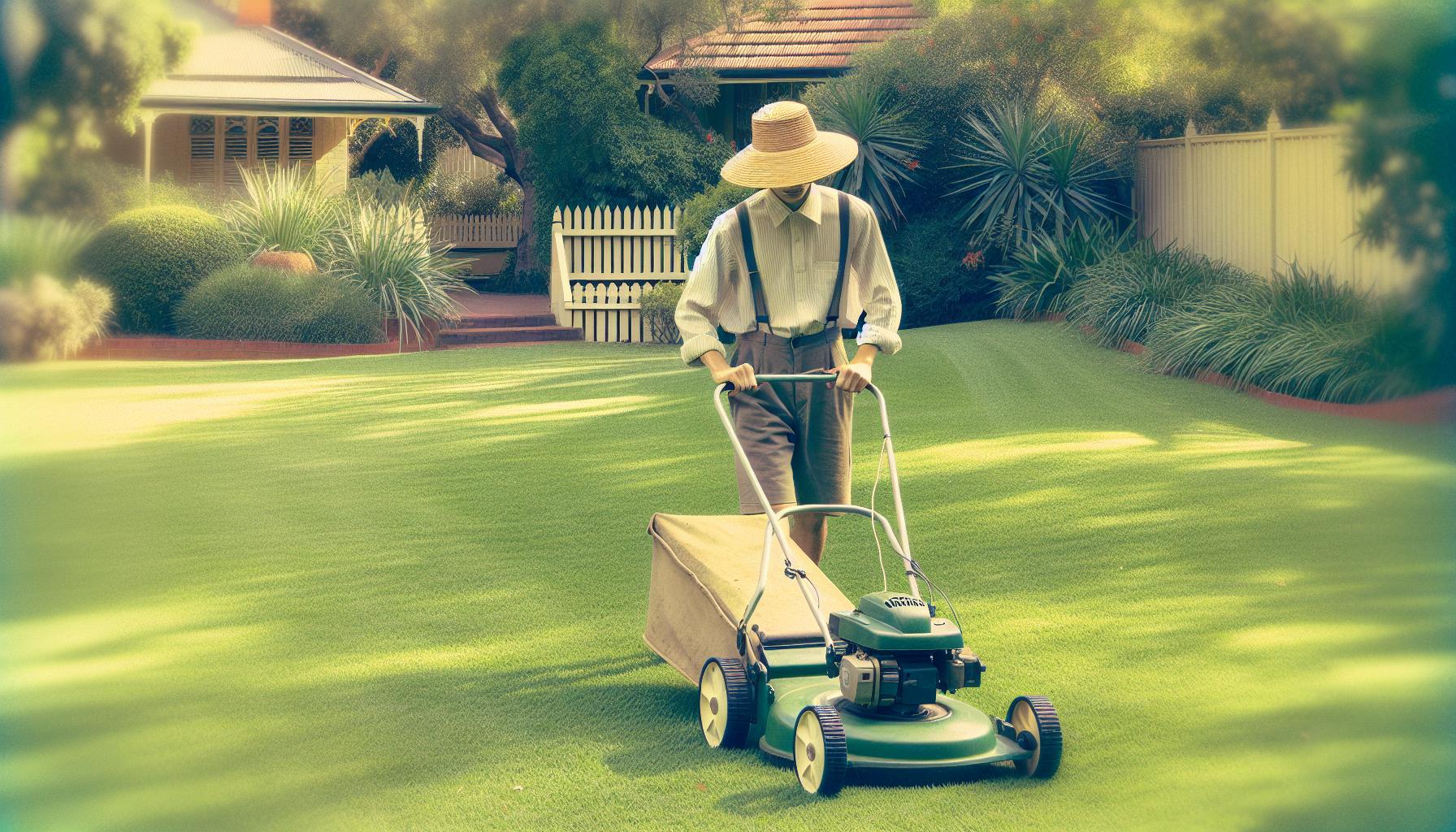Maintaining a lush green lawn requires more than just occasional watering; it hinges on the right mowing schedule. Understanding how often to mow grass not only enhances its appearance but also promotes healthier growth. This article dives into the factors that influence mowing frequency, helping homeowners achieve that perfect lawn while saving time and effort.
Understanding Grass Growth
Grass growth depends on several factors, significantly influencing how often mowing should occur. Awareness of these factors helps maintain a healthy lawn.
Factors Affecting Growth Rate
- Grass Type: Different grass varieties grow at varying rates. Cool-season grasses, like fescue and bluegrass, typically grow faster in spring and autumn. Warm-season grasses, such as Bermuda and zoysia, thrive in summer.
- Soil Quality: Fertile, well-aerated soil encourages robust grass growth. Properly balanced nutrients, pH levels, and organic matter enhance growth rates.
- Watering: Adequate watering supports photosynthesis and growth. Grass requires around 25mm of water weekly, either from rainfall or irrigation.
- Sunlight: Grass needs adequate sunlight for optimal growth. Most varieties require at least six hours of direct sunlight daily.
- Temperature: Optimal growth occurs within specific temperature ranges. Cool-season grasses grow best between 15°C to 24°C, while warm-season grasses flourish between 24°C to 30°C.
Seasonal Variations
- Spring: Growth accelerates in spring for cool-season grasses, prompting more frequent mowing.
- Summer: Warm-season grasses peak in summer. Mowing may be needed every week during this period to maintain height.
- Autumn: Cool-season grasses again experience growth in autumn. Mowing frequency may increase before winter dormancy.
- Winter: Growth slows significantly, and mowing is usually unnecessary, except for warm-season varieties that may need occasional trimming.
Understanding these factors helps establish an effective mowing schedule, ensuring a healthy lawn throughout the year.
Recommended Mowing Frequency

Mowing frequency is vital for maintaining a healthy lawn. Several factors affect how often one should mow their grass.
General Guidelines
Mow grass when it reaches one-third taller than its ideal height. For most grass types, this typically means mowing every 7 to 14 days during the growing season. Conditions such as rainfall and temperature can accelerate growth, necessitating more frequent cuts. The best practice includes maintaining a consistent schedule to promote a uniform appearance and encourage robust growth.
Specific Grass Types
- Cool-Season Grasses: These grasses, such as Kentucky bluegrass and fescue, thrive in spring and autumn. Mowing occurs every 5 to 10 days during peak growth periods, with frequency decreasing in summer and winter.
- Warm-Season Grasses: Varieties like Bermuda and St. Augustine flourish in summer months. Mowing every 7 to 14 days ensures healthy growth from late spring to early autumn, with less frequent cuts during cooler months.
- Fine Fescue: This grass type, ideal for shady areas, should be mowed every 10 to 14 days, adjusting frequency based on growth conditions.
- Ryegrass: This grass grows rapidly in spring and fall, requiring mowing every 5 to 7 days during peak growth periods.
For larger properties or those seeking convenience, opting for a hydrostatic transmission lawn mower can streamline the mowing process, ensuring consistent and efficient performance.
Signs Your Grass Needs Mowing
Observing grass growth is essential for determining the right mowing schedule. Several clear indicators suggest when it’s time to mow.
Height Indicators
Grass height plays a significant role in assessing its readiness for mowing. Grass should be mowed when it reaches one-third taller than the ideal height. For example, if the desired height for Kentucky bluegrass is 5 cm, cutting it down to about 3.5 cm ensures optimal health. Noticing uneven patches also indicates that specific areas may require mowing sooner. Consistently monitoring height helps maintain a uniform lawn.
Time Since Last Mowing
Timing since the last mowing provides a straightforward guideline for scheduling the next cut. Regular mowing every 7 to 14 days during peak growing seasons ensures grass remains healthy. If more than 14 days have passed since the last mowing, the grass likely requires cutting, especially in active growth periods. This timeframe, coupled with height indicators, offers a reliable method for determining when to mow.
Best Practices for Mowing
Maintaining a healthy lawn requires adherence to essential mowing practices. These guidelines enhance grass health, promote even growth, and improve the overall appearance of the garden.
Ideal Mowing Techniques
- Mow at the Right Height: Grass should be cut to a height appropriate for its species. Most grasses thrive between 5 to 8 cm.
- Avoid Cutting Wet Grass: Mowing wet grass can result in uneven cuts and clumping. Aim for dry conditions to ensure a clean, even mow.
- Change Mowing Patterns: Alter mowing directions regularly to prevent soil compaction and promote upright growth.
- Maintain a Sharp Blade: Sharp blades produce clean cuts, reducing stress on the grass and minimising disease risk. Sharpen blades every 20 to 25 hours of use.
Mowing Equipment
- Select the Right Mower: Choose a mower suitable for the lawn size. Reel mowers work best for small lawns, while rotary mowers suit larger areas.
- Consider Mulching Mowers: Mulching mowers shred grass into smaller pieces, allowing clippings to return to the lawn, enhancing nutrient content.
- Use a Bagger for Clippings: If opting for a bagging mower, collect clippings to promote a tidy appearance and manage thatch accumulation.
- Ensure Proper Maintenance: Regularly service mowers to ensure efficient operation. Check oil levels, clean filters, and inspect belts for wear.
Implementing these practices optimises mowing efforts, contributing to a vibrant and well-kept lawn.
Conclusion
Establishing a consistent mowing schedule is vital for achieving a lush and healthy lawn. By understanding the specific needs of different grass types and considering environmental factors, homeowners can optimise their mowing frequency. This not only enhances the lawn’s appearance but also promotes robust growth.
Regular monitoring of grass height and adhering to recommended mowing practices will further ensure a vibrant garden. With the right approach and a little attention to detail, maintaining an attractive lawn becomes a manageable task that adds value to any property.
Frequently Asked Questions
How often should I mow my lawn?
Mowing frequency depends on grass type and growing conditions. Generally, aim to mow every 7 to 14 days during the growing season. For cool-season grasses, like fescue, mow every 5 to 10 days during peak growth. Warm-season grasses, such as Bermuda, typically require mowing every 7 to 14 days in summer.
What factors affect mowing schedules?
Several factors influence mowing schedules, including grass type, soil quality, watering, sunlight, and temperature. Cool-season grasses grow faster in spring and autumn, while warm-season grasses flourish in summer. Understanding these factors helps tailor your mowing routine effectively.
How do I know when to mow?
Mow your lawn when the grass reaches one-third taller than its ideal height. Additionally, if it has been more than 14 days since your last mowing, especially during active growth, it’s a good indication that your grass needs cutting.
What height should I mow my grass?
The ideal mowing height for most grasses is between 5 to 8 cm. Maintaining this height promotes healthy growth and a uniform appearance while preventing stress on the grass. Adjusting the mower height accordingly according to grass type is also crucial.
What are the best practices for mowing?
Best practices include mowing at the right height, avoiding wet grass, changing mowing patterns to prevent soil compaction, and keeping blades sharp. This enhances grass health and improves your lawn’s overall appearance, ensuring a vibrant and well-kept garden.
Should I mulch or bag grass clippings?
Using a mulching mower can enhance lawn health by returning nutrients to the soil. Bagging clippings can help manage thatch build-up. Choose the option that best suits your lawn care goals and lawn size. Regular maintenance of your mower is also essential.
How does seasonality affect mowing frequency?
Seasonal changes significantly impact mowing frequency. During spring and autumn, cool-season grasses may require mowing every 5 to 10 days, while summer sees an increase for warm-season grasses. Winter typically adds a slowdown, decreasing the frequency needed. Adjust your schedule accordingly.


